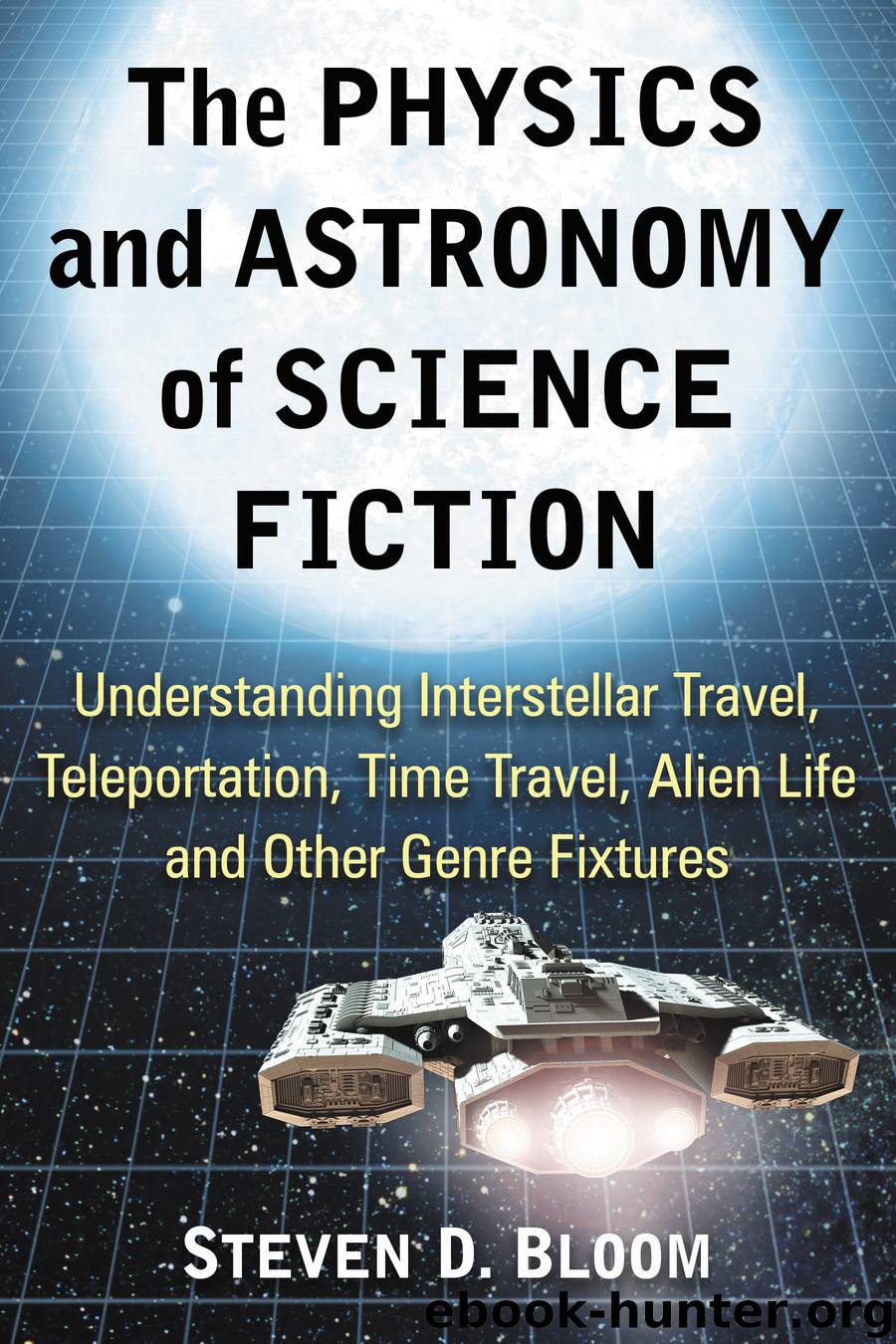The Physics and Astronomy of Science Fiction by Steven D. Bloom

Author:Steven D. Bloom
Language: eng
Format: epub
Publisher: McFarland
Published: 2016-07-05T16:00:00+00:00
On the Fringe of Many Worlds
Another type of Universe derives from consideration of quantum mechanics and the Many Worlds Hypothesis of Hugh Everett (Tegmark refers to these as Level III multiverses). In 1959 Hugh Everett proposed an alternative to the Copenhagen interpretation by stating that the probability of each possible state (or “reality”) evolves separately, and for each of these states there is a separate world (i.e., a Universe, in modern parlance). The separateness of these Universes leaves them unobservable from each other. As stated by Steve Manly in Visions of the Multiverse, “There is no way for an observer in one stream to perceive what is happening in another” (Manly 2011). At times this seems to be the theory for the parallel Universes encountered in Fringe. In the episode “The Road Not Taken,” Walter’s explanation of potential alternate realities does have commonalities with the Many Worlds Hypothesis (he repeats part of this explanation in later episodes). Later, it’s not completely clear whether “Many Worlds” applies to Fringe because the plots only deal with one other alternate Universe. We don’t know whether that’s because it’s the only Universe that exists, the only that’s accessible, or the only that the characters are interested in. We also see a similar theory of “Many Worlds” espoused in the ST:TNG episode “Parallels,” in which the Enterprise security chief, Worf, experiences an energy surge that shifts him between these “many worlds.” In one “world” he is at a birthday party with chocolate cake, and in another world he shifts into, with what appears to be angel food cake (a similar plot develops in the 1934 short story “Sideways in Time,” though without reference to anything quantum mechanical and is close to the premise of the entire run of the television show Sliders). In the climactic scene of this episode, the states start to combine, and we see hundreds of Enterprises appearing from these worlds, including one that had just experienced a fierce battle and was virtually destroyed. This also appears to be the premise for the similarly named film, Parallels. Here, a brother and sister team, in search of their missing father, encounter evidence for many alternate Earths, and are eventually transported to one themselves. Unfortunately, one primary ramification of the theory is that there can be no interaction at all between the possible worlds. Therefore, this unfortunately would be one of the least tenable theories for alternate Universes as are typically encountered in science fiction, at least if one has any hope of traveling between them.
Tegmark noticed that both the “infinite space” multiverse mentioned earlier and the “quantum multiverse” seem to be accounting for the same thing, many slightly differing copies of us, albeit with very different origins. However, after some calculation, he realized that a multiverse of many differing copies, all with different “collapsed wave functions” is the same thing (as far as the math is concerned) as a multiverse spawned by not collapsing the wave function. So, it would seem that if the Many Worlds Hypothesis is correct, there is no need to appeal to new Universes being created.
Download
This site does not store any files on its server. We only index and link to content provided by other sites. Please contact the content providers to delete copyright contents if any and email us, we'll remove relevant links or contents immediately.
| Direction & Production | Genres |
| Guides & Reviews | History & Criticism |
| Reference | Screenwriting |
| Shows |
Robin by Dave Itzkoff(2383)
Head of Drama by Sydney Newman(2255)
I'm Judging You by Luvvie Ajayi(2150)
The Paranormal 13 (13 free books featuring witches, vampires, werewolves, mermaids, psychics, Loki, time travel and more!) by unknow(2052)
Ten by Gretchen McNeil(1830)
Single State of Mind by Andi Dorfman(1759)
#MurderTrending by Gretchen McNeil(1614)
Key to the Sacred Pattern: The Untold Story of Rennes-le-Chateau by Henry Lincoln(1594)
Merv by Merv Griffin(1562)
Most Talkative by Andy Cohen(1546)
This Is Just My Face by Gabourey Sidibe(1433)
Notes from the Upside Down by Guy Adams(1413)
The Hunger Games: Official Illustrated Movie Companion by Egan Kate(1389)
Springfield Confidential by Mike Reiss(1363)
Jamie Oliver by Stafford Hildred(1356)
Binging with Babish by Andrew Rea(1329)
Clarkson--Look Who's Back by Gwen Russell(1306)
The TV Writer's Workbook: A Creative Approach To Television Scripts by Ellen Sandler(1300)
Blue Planet II by James Honeyborne & Mark Brownlow(1236)
